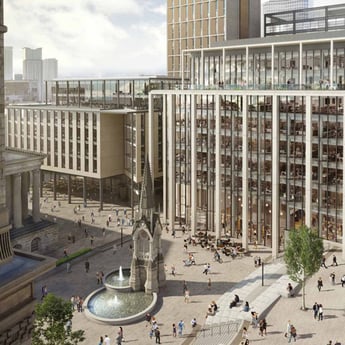Deconstructing regeneration

There’s been a noticeable distancing from the term regeneration with placemaking becoming the replacement buzzword in the industry. Yet with an acute housing crisis and a planning system that assesses the suitability for development based on the colour of land - (greenfield v brownfield), the intensification and the renewal of underutilised parts of our cities will have a direct impact on our existing and future communities. The need for regeneration has never gone away nor been more critical to our economy.
So by deconstructing regeneration, can we reignite its appeal for those whose responsibility it is to bring about change in our towns and cities?
The intended use and design of a place may belong to planners and masterplanners, but it is people who activate the outputs of our regeneration efforts who really count. It is people who love and hate spaces and buildings in equal measures – who travel through, work, live, play, visit, invest or rebel within them – maybe finding different ways to use them than was originally intended, but nonetheless in a way that meets their needs.
I may not be a skateboarder or even what you would think of as a typical skateboarding fan, but I am a big fan of the skateboarding community. They embrace our public spaces, animate our cities, bring spaces to life, and are creating their community and connections with their cities. As city leaders we should encourage them, not frown upon them. As a mum of a skateboarder – I know these communities make my son feel safe and belong. In contrast, I feel let down walking through a space that acts solely as a plinth for some grandiose architectural building. We all know spaces that simply do not work – but do we understand their role and value when they do work?
A community that loves a place can accelerate its commercial success, occupation rates and returns immensely. It can be vocal and however, we have been through a period where we have turned down the volume on the voice of the community by not appreciating its true values or understanding the risks associated with ignoring it.
When you focus too much on the place and stop listening to the people, then a void and disconnect emerges between developers and their commercial expectations, and community and political aspirations. Regeneration is a process of social, economic renewal as well as simply environmental, each has a critical role in bringing these two positions, of people and places, back together.
Why do we need to refresh regeneration? The answer is simple: cities evolve, how we live is changing, how we interact is changing as is the resilience of cities. We need to make them work harder, accommodate more people and improve their sustainable credentials.
Regeneration has to evolve in response. The social and economic challenges for each city in the UK is different. Regeneration programmes need to see the whole vision and yet they need to understand the minutiae and listen to the people, ensuring the strategy is relevant for them.
Regeneration has to be more than just about building and pretty places. We have to connect major regeneration projects and urban investments programmes to our established communities. People and local businesses have to feel the direct benefits of the regeneration investment they expect increasingly more from.
Just like cites, regeneration is evolving and as strategic advisors we need to learn from the best and the worse bits. But most importantly we need to listen and turn the volume back up on the voice of the people.
